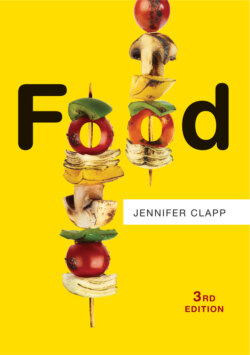Читать книгу Food - Jennifer Clapp - Страница 17
The commodification of food
ОглавлениеAs the world food economy has expanded over the past century, food has become increasingly commodified. In other words, food has become like any other tradable commodity, valued for the profits it can generate and often discounting its other functions. This trend in many ways has both shaped and is shaped by how the food system developed historically. We have moved increasingly away from food being viewed primarily as a source of nourishment and a cultural feature of society, and toward food as any other product that firms produce, sell, and trade. The people who eat those food products in turn have been reduced to “consumers,” rather than being considered simply as “eaters.” Distance between the production and the eating of food is increased by the commodification of food within the global economy. As noted above, it is not just the physical distance that food travels in global food markets that has grown, but also our lack of awareness of the conditions of its production and the skewed nature of power differentials along agrifood supply chains.
This movement away from food being seen as a special category of goods affects people’s lives, livelihoods, and nutrition in very real ways. Access to food has become largely a market transaction, and if an individual’s place in the economy is threatened, so is their food security.12 For countries that have become dependent on food imports, the commodification of food is of particular importance, with entire countries now highly vulnerable to market changes. As former US President Bill Clinton noted in a speech on World Food Day in 2008, “Food is not a commodity like others . . . it is crazy for us to think we can develop a lot of these countries where I work without increasing their capacity to feed themselves and treating food like it was a color television set.”13
The commodification of food has not just been in terms of the physical product of food, but also in its abstract form, in the development of financial products based on agricultural and food commodities, as noted above. This financialization of food in effect takes the commodification of food to a new and intangible level, further distancing producers from individual consumers by stretching the scope of the transactions between them. It also increases the distance between the fundamentals of supply and demand with respect to the pricing of food, such that food prices are now determined as much by the overall financial investment climate as they are by the forces that determine the size of the harvest.
